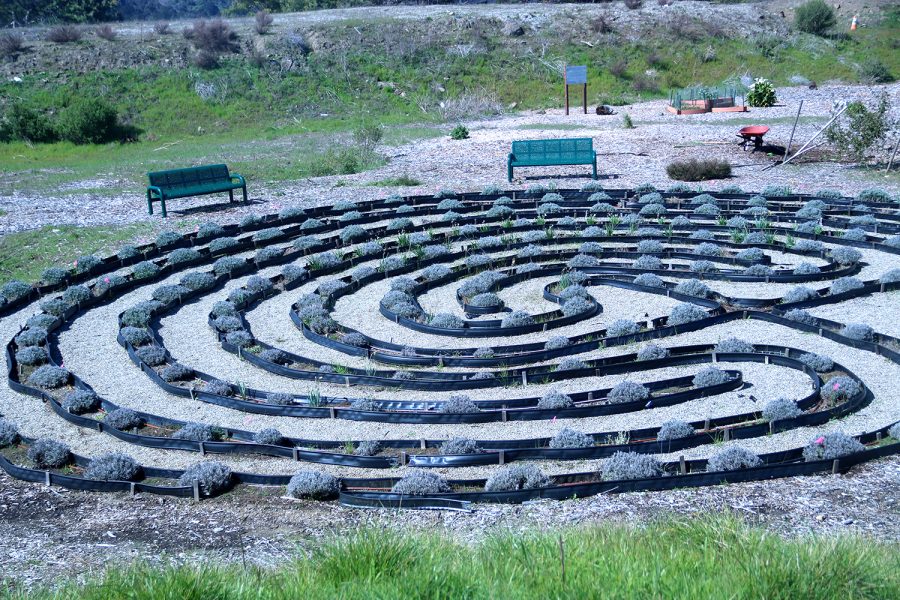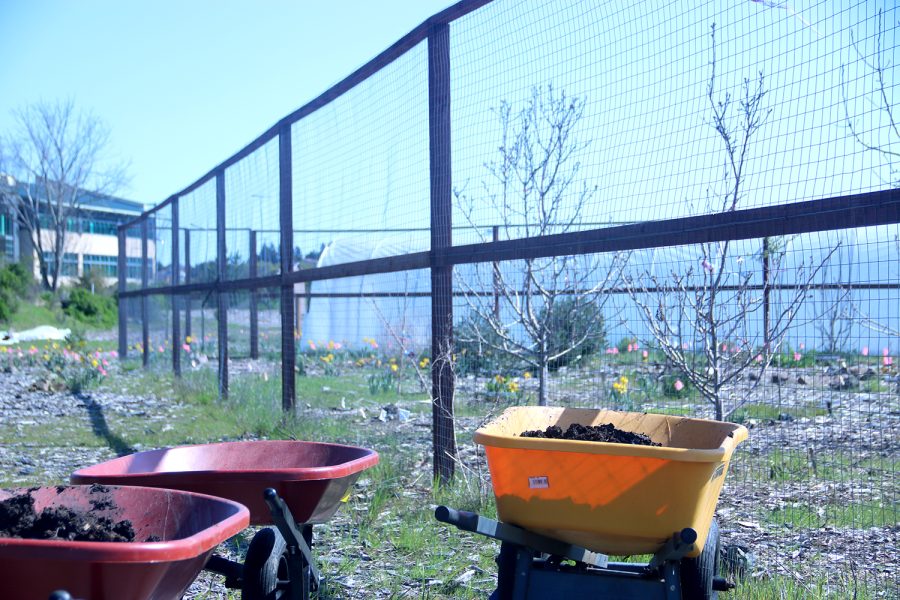Acres of empty land on the San Mateo County Youth Services grounds was a destiny unfulfilled in 2010. Using design concepts to promote sustainability, education, and mental health, advocates for new opportunities stepped in. In 2016, the Phoenix Garden was born.
“One of the agreements with the neighbors in that community was that the county wouldn’t do any construction on that site; that it would be nice to do something else with it,” said Kris Jensen, a garden project manager who has been involved since 2011.
The garden designers had permaculture in mind, a system in which ecosystems are primarily self-sufficient and sustainable. This was important to the garden’s innovator, Toni DeMarco, who took a permaculture course and used it to develop the project. The plan was at a standstill for about five years until the county got funding in 2016 to plant trees, which was part of the vision.
Following the tree planting, the county got additional funding for project managers.
“They were trying to get volunteers to come out and try to build out the plan. In connection, under our partnership with a county health department under Dr. Scott Morrow—also the behavioral health department at the detention facility and the department of sustainability—we’ve been able to build that lavender labyrinth,” Jensen said.
The lavender labyrinth, considered the “heart” of the garden, is a place for self-healing and meditation. It serves both community members and youth in the nearby detention center. According to new research, the garden may have the power to bring several positive benefits to San Mateo County residents.
“Nature can impact a lot of positive benefits to individuals and communities, and there’s a fair amount of research and evaluation related to how green spaces impact health and well-being,” said Aaron Hipp, an associate professor of parks, recreation, and tourism management at North Carolina State University.
In addition to the labyrinth, the garden developers have worked with beekeepers to keep the recently planted orchard sufficient after the original one was decimated by surrounding wildlife. Volunteering is also vital to the garden’s success and growth, and people like Jensen have been bringing in volunteers weekly to help it prosper.
“Without volunteers, nothing would have happened out there. That’s partly built into the program; we really want volunteers to be there to take ownership of it,” Jensen said.
Volunteers from around the county come to the garden to do various projects. These include building eco-friendly structures and working in the orchard.
“It has been a while since I’ve last been to the Phoenix Garden, but I can recall that various species of plants that our team was introduced to were thriving,” said Cady Shum, a Carlmont junior and Green Team member who volunteered at the garden last year.
The Carlmont Green Team pulled weeds to help the garden managers set up an aquaponic system. This farming system plays a role in allowing the garden to embrace permaculture.
“In one system, fish are raised in tanks, and their waste products are used to provide nutrients for plants grown in a hydroponic system. The plants, in turn, purify the water that returns to the fish tank,” Shum said.
This aquaponics system upholds permaculture principles and maintains sustainability, but it also has a future in serving the youth in the center.
“We’re going to create a model system there to teach kids within the justice system a green job skill because we’re starting to see more and more companies using these aquaponic systems to grow fish and greens,” Jensen said.
Hipp conducted a study on the benefits of parks and green spaces, revealing the potential for Phoenix Garden’s future. With plans to provide educational programs and more volunteer opportunities through sustainable avenues, the garden could be a step in the right direction for Parks and Recreation.
“There are multiple benefits that come from being in green spaces and letting those green spaces be natural. So now it’s really the idea of evaluating that, showing that, and communicating that to broader audiences,” Hipp said.













